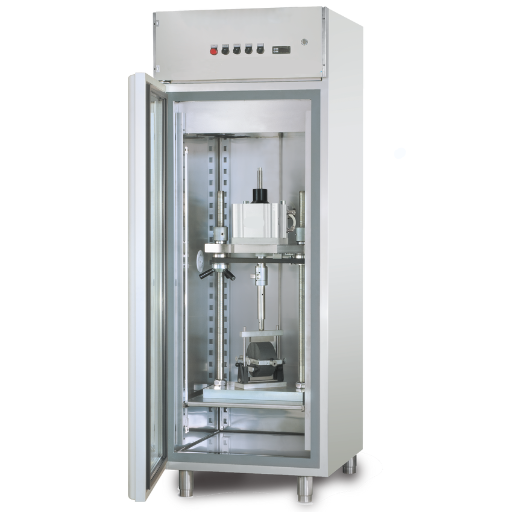A failed compression test can be one of the most telling diagnostic tools when it comes to identifying internal engine issues, but understanding what it really means requires a deeper look. Whether you’re dealing with a noticeable drop in performance, engine misfires, or excessive fuel consumption, the results of a compression test can pinpoint the root causes of these symptoms. This article dives into the critical insights a failed compression test provides, from identifying potential cylinder leakage to detecting issues with valves, piston rings, or head gaskets. By the end, you’ll not only be able to interpret the results but also understand the underlying problems that may be impacting your engine’s performance. Stick with us to demystify this essential diagnostic procedure and ensure your engine remains in optimal condition.
What is a Compression Test and Why is it Important?

A compression test is a diagnostic procedure used to evaluate the condition of an engine’s internal components by measuring the pressure generated within each cylinder during the compression stroke. This test is crucial because it helps identify potential issues such as worn piston rings, damaged valves, or a failing head gasket, which can significantly impact engine performance. By assessing whether each cylinder maintains proper compression levels, mechanics and vehicle owners can pinpoint problems early and take corrective action, ensuring the engine operates efficiently and reliably.
How Does a Compression Test Work?
A compression test works by measuring the pressure inside an engine’s cylinders during the compression stroke. To perform the test, the spark plugs are removed to allow access to each cylinder, and a compression gauge or tester is inserted into the spark plug hole. The engine is then cranked, and the gauge records the maximum pressure for each cylinder. The readings are compared against the manufacturer’s specifications to determine if they fall within the acceptable range. Variations in pressure between cylinders may indicate issues such as leaking valves, worn piston rings, or a blown head gasket, enabling precise diagnosis of engine health.
What Does a Compression Test Tell About Engine Health?
A compression test provides critical insights into an engine’s internal condition, specifically the sealing capabilities of the combustion chamber. Normal compression readings typically range between 120 and 200 psi, depending on the engine’s design and specifications. Variations in these readings can diagnose several issues:
- Low Compression Across All Cylinders: This may indicate timing chain or belt failure, or issues with the intake or exhaust valves.
- Low Compression in One Cylinder: This often points to a specific problem, such as a damaged valve, a worn piston ring, or a head gasket leak.
- High Compression: Excessive compression may result from carbon buildup in the combustion chamber, requiring cleaning or decarbonization.
By comparing the measured pressures to manufacturer-recommended values and observing consistency between cylinders (typically no more than 10-15% variation), technicians can identify problems that require immediate attention to maintain engine performance and reliability.
What Tools are Needed for a Compression Test?
To perform a compression test, I would need a few essential tools to ensure accuracy and efficiency:
- Compression Tester or Gauge – This is the primary tool used to measure the pressure within the engine’s cylinders. It typically includes a gauge, a hose, and a threaded adapter to fit the spark plug holes.
- Spark Plug Socket and Ratchet – A spark plug socket with the proper size and a ratchet are necessary to remove the spark plugs safely before conducting the test.
- Adapter Set – Depending on the engine type, I might require various threaded adapters to accommodate different spark plug sizes.
- Remote Starter Switch – This tool allows me to crank the engine directly without using the vehicle’s ignition, ensuring consistent compression readings.
- Service Manual – Referring to the manufacturer’s service manual is crucial to verify the recommended compression values and ensure all components are tested according to specifications.
Having these tools ready enables a precise and thorough compression test to diagnose engine performance effectively.
Common Causes of Low Compression in Engines

- Worn Piston Rings – Excessive wear on piston rings can result in a poor seal between the piston and cylinder walls, allowing gases to escape and reducing compression.
- Damaged Valves or Valve Seats – Burnt or improperly seated intake or exhaust valves can lead to leakage, preventing the cylinder from maintaining adequate pressure.
- Blown Head Gasket – A failure in the head gasket can cause compression loss between cylinders or into the cooling system.
- Cracked Cylinder Head or Block – Structural damage to the cylinder head or engine block often leads to a significant drop in compression levels.
- Timing Issues – Improper valve timing due to a broken or misaligned timing belt or chain can disrupt compression cycles.
Identifying these issues precisely often requires further diagnostic tests to pinpoint the root cause of compression loss.
What are Signs of Low Compression in One or More Cylinders?
Low compression in an engine manifests through several clear indicators that often affect its performance and functionality. These include:
- Difficulty Starting the Engine – A cylinder with insufficient compression will struggle to ignite the air-fuel mixture, leading to slow or incomplete starts, especially in cold conditions.
- Misfiring Cylinders – Low compression disrupts the combustion cycle, which can cause one or more cylinders to misfire consistently.
- Reduced Power and Acceleration – Compression is essential for generating power. A noticeable loss of engine power, sluggish acceleration, and poor overall performance is a key sign.
- Rough Idle – The engine may idle erratically due to uneven power output among cylinders, resulting in vibrations or a shaking sensation.
- Excessive Exhaust Smoke – If poor compression causes incomplete combustion, it can lead to increased exhaust emissions, often noticeable as excessive white or blue smoke.
- Low Compression Test Readings – Diagnosing this issue requires a compression test. Normal compression levels for most engines typically range between 140-180 psi per cylinder; readings below 100 psi indicate a severe problem.
Each of these signs warrants further investigation to confirm the cause and determine appropriate repairs. Conducting systematic diagnostic tests, including leak-down testing, can help isolate the issue and assess its severity.
How Do Bad Rings and Valves Contribute to Low Compression?
Bad rings and valves significantly contribute to low compression in an engine due to their direct role in maintaining the pressure within the combustion chamber. Piston rings are responsible for sealing the space between the piston and the cylinder wall. If the rings are worn, cracked, or improperly seated, they allow air-fuel mixture or combustion gases to escape into the crankcase. This leakage reduces compression pressure, often resulting in power loss, misfires, or difficulty starting the engine. Common compression losses from faulty piston rings are typically indicated by readings below 100 psi, whereas healthy compression ranges between 140-180 psi for most engines.
Valves—both intake and exhaust—affect compression when they fail to seal properly. This can occur due to burned valves, bent valves, or deposits on valve faces or seats. A poor seal allows pressurized gases to escape from the combustion chamber into the intake or exhaust manifold. A leak-down test can help identify valve-related compression issues, as abnormal leakage rates above 20% generally indicate significant sealing problems.
Both components are critical for efficient engine operation, and addressing such issues often involves part replacement or re-machining to restore compression levels to normal.
Could a Blown Head Gasket Be the Culprit?
A blown head gasket can indeed be the culprit behind engine performance issues, and it is a critical problem that requires immediate attention. The head gasket serves to seal the combustion chamber, ensuring that coolant, oil, and combustion gases remain in their respective flows. When a head gasket fails, it can result in symptoms such as overheating, white exhaust smoke (indicating coolant entering the combustion chamber), engine misfires, loss of power, and contamination of oil with coolant, often resulting in a milky appearance.
Common causes for a blown head gasket include engine overheating, which warps the cylinder head or block, as well as pre-ignition or detonation that increases stress on the gasket. Diagnosis involves observing visible symptoms and conducting tests such as a cooling system pressure test, a cylinder compression test, or a chemical test to detect exhaust gases in the coolant. If confirmed, repair typically entails replacing the gasket, and in severe cases, machining the cylinder head or block may also be necessary to ensure proper sealing and functionality. Regular maintenance and monitoring engine temperature are vital preventative measures.
Diagnosing Engine Problems After a Failed Compression Test

When diagnosing engine problems after a failed compression test, it is essential to isolate the root cause of the issue. A failed compression test typically indicates a loss of sealing within the combustion chamber. Start by inspecting the cylinder head gasket for potential leaks, as this is a common failure point. Additionally, examine the cylinder walls and piston rings for wear, scoring, or damage, which could result in reduced compression. Valve-related issues, such as burnt or warped valves or improper seating, should also be assessed by visually inspecting the valve train and conducting a leak-down test. If these components are found to be intact, check for potential cracks or warping in the cylinder head or engine block using specialized tools like dye penetrants or pressure testing. Precise diagnostics and targeted repairs are essential to restoring engine performance.
How to Perform a Leak-Down Test?
To perform a leak-down test, I first ensure the engine is cool and the cylinder being tested is at top dead center (TDC) on the compression stroke. This is critical to prevent valve overlap and ensure accurate results. I then remove the spark plug for the selected cylinder and attach a leak-down tester to the spark plug hole. Next, I supply compressed air to the tester while carefully observing the gauge to assess the percentage of leakage.
If there is excessive leakage, I listen for escaping air at key locations to determine the issue source. Air hissing through the intake indicates intake valve issues, noise at the exhaust points to exhaust valve problems, and air escaping into the crankcase suggests worn piston rings. Consistent methodology and attention to detail help isolate faults effectively and ensure reliable diagnostics.
What Role Does the Compression Gauge Play in Diagnosis?
- Measuring Cylinder Pressure: With regard to measuring the individual cylinder pressures, the compression gauge can measure individual cylinder block pressures accurately, enabling engine diagnostics with respect to tedious precise boundaries defined by the manufacturer.
- Identifying Cylinder Imbalances: The compression gauge can evaluate all cylinder pressures and draw comparisons among them, which assists in valve leak detection, gasket leak detection, or the malfunctioning of piston rings due to physical wear.
- Assisting in Engine Health Evaluation: An evaluation of the engine using the compression test will provide an analysis indicating the level of the engine’s wear and efficiency thereby guiding decisions concerning maintenance works or pre-repair examinations.
- Pinpointing Fault Locations: The faulty parts can be determined through measurement of pressure deviations through different combustion chambers which can indicate broken valves or some leakage in combustion chamber seals are in that particular combustion chamber.
- Confirming Repair Efficacy: Test compression measures undertaken after the maintenance work serves to ascertain if the actions taken enhance the overall functionality of the engine in the desired capacity as set out.
When to Consult a Professional Mechanic?
I recommend consulting a professional mechanic if the compression readings are significantly lower than the manufacturer’s specifications or vary widely between cylinders, as this usually indicates serious internal issues like damaged piston rings or a cracked cylinder head. Additionally, if you lack the specialized tools or technical expertise to accurately diagnose or address the problem, it’s best to seek professional help to ensure the engine is repaired correctly and efficiently.
How to Fix Low Compression Issues?

Steps to Fix Low Compression Issues
- Diagnose the Problem: Begin by performing a compression test to identify which cylinder(s) have low compression. Follow up with a leak-down test to pinpoint the exact cause, such as worn piston rings, damaged valves, or a blown head gasket.
- Inspect and Repair Valves: If the issue is traced back to faulty valves due to improper seating, overheating, or carbon buildup, disassemble the cylinder head and inspect the valves for wear or damage. Replace or reseat the valves as needed.
- Replace Piston Rings: Worn or damaged piston rings are a common cause of low compression. Access them by removing the cylinder head and oil pan, then replace the defective rings. Ensure proper installation and lubrication to restore performance.
- Repair or Replace the Head Gasket: Fitting a new head gasket is necessary if it is blown. Before reassembly, any warping or damage to the cylinder head or the engine block should be dealt with by resurfacing or machining.
- Inspect Cylinders for Wear or Cracks: A visual inspection of the cylinder walls should reveal scoring, cracks, or excessive wear. If the damage is severe, consider reboring and replacing the pistons; otherwise, using welding to repair the cracks is adequate.
- Reassemble and Test: After all the necessary changes are made, all components of the engine should be carefully reassembled. The compression test mentioned above should be conducted again, and if satisfactory, the vehicle can be driven.
Seek the services of a mechanic when the required tools and parts become unavailable. A professional can efficiently access the parts guaranteed to last in the engine.
What are the Steps for Compression Repair?
- Perform a Comprehensive Diagnosis: Begin by conducting a compression test to confirm low compression in one or more cylinders. Use a compression gauge and follow the manufacturer’s guidelines for your specific engine model.
- Inspect the Cylinder Head: Remove the cylinder head to examine the condition of the gasket, valves, and valve seals. Check for any visible signs of damage, wear, or warping.
- Evaluate the Piston Rings and Cylinders: Inspect the piston rings for wear, scoring, or lack of tension. Additionally, examine the cylinder walls for scoring, pitting, or signs of excessive wear that could cause compression loss.
- Check the Valve Timing: Ensure the timing belt or chain is aligned correctly to the manufacturer’s specifications. Misaligned timing can lead to valves not sealing properly, affecting compression.
- Replace Damaged Components: Repair or replace any damaged parts, including the head gasket, valves, valve seals, piston rings, or cylinder liners. If severe damage exists, replacing the piston or re-boring the cylinder may be necessary.
- Address Sealing Surfaces: For optimal compression, ensure that all sealing surfaces, such as the cylinder head and block mating surfaces, are clean, free from debris, and not warped. Resurface the cylinder head if required.
- Reassemble the Engine: Carefully reassemble all components, paying close attention to torque specifications and proper alignment to avoid further issues during operation.
- Conduct a Post-Repair Compression Test: Once the repair is complete, perform another compression test to confirm that the issue has been resolved and that the affected cylinders meet the recommended pressure levels.
- Test-Drive the Vehicle: After verifying the compression levels, test-drive the vehicle to ensure the engine operates smoothly under different conditions and no further issues arise.
Each step in the process must be performed with precision and adherence to the factory service manual for accurate results and reliable engine performance.
Can Replacing Piston Rings Solve Compression Problems?
Yes, replacing piston rings can solve compression problems if the issue is caused by worn or damaged rings. Piston rings maintain the seal between the piston and cylinder wall, and when they fail, it can result in compression loss, poor engine performance, and increased oil consumption. However, this solution is only effective if the cylinder walls are still within acceptable tolerance and free of damage. It is critical to perform a thorough diagnosis, including a compression and leak-down test, to confirm the root cause before proceeding with ring replacement.
Is Valve Replacement Necessary?
Determining whether valve replacement is necessary depends on the specific symptoms and findings observed during engine diagnostics. Common indicators of valve-related issues include excessive oil consumption, loss of compression, rough idling, or visible damage such as burnt or bent valves. A cylinder leakage test or a thorough inspection using a borescope can help confirm the condition of the valves. If the valves are burnt, warped, or no longer sealing correctly against the valve seat, replacement or repair is typically required. However, in less severe cases, a valve adjustment might resolve the issue. It is essential to address these problems promptly, as neglecting valve issues can lead to more extensive engine damage.
Maintaining Good Compression in Your Engine

Tips for Maintaining Optimal Compression
Maintaining good compression involves regular inspection and adherence to scheduled maintenance. First, ensure proper lubrication by using the correct grade of high-quality engine oil and replacing it at recommended intervals to prevent wear on internal components. Second, monitor and promptly replace damaged or worn-out piston rings, which play a critical role in sealing the combustion chamber. Third, ensure the integrity of the cylinder head gasket to avoid compression leaks and overheating. Lastly, keep the air intake and fuel systems clean to support efficient combustion. Adopting these practices will help sustain engine performance and minimize the risk of costly repairs.
How Regular Maintenance Helps Prevent Low Compression
Regular maintenance is essential for ensuring optimal engine compression levels and prolonging engine life. Key technical parameters to monitor include cylinder compression pressure, typically ranging between 120-200 PSI for most gasoline engines and 275-400 PSI for diesel engines. Deviations from these values may indicate problems such as worn piston rings or leaky valves.
By regularly inspecting critical components such as piston rings, valve seals, and the cylinder head gasket, potential issues can be identified and addressed early. For example, maintaining proper torque specifications on the cylinder head bolts (usually specified by the manufacturer) ensures an airtight seal and prevents compression loss. Additionally, routine air filter replacements and cleaning of fuel injectors help maintain clean air and fuel delivery, optimizing combustion efficiency.
Adhering to the manufacturer’s recommended oil change intervals is equally critical, as clean and correctly graded oil reduces wear on internal components like the cylinder walls and piston rings, preserving their sealing capability. Implementing these maintenance practices will help sustain proper compression levels, thereby ensuring consistent engine performance.
What is the Importance of Checking Spark Plugs and Exhaust?
Proper maintenance of spark plugs and the exhaust system is essential for optimal engine performance and efficiency. Spark plugs play a critical role in igniting the air-fuel mixture within the engine’s cylinders, ensuring smooth combustion. Worn or fouled spark plugs can cause misfires, reduced fuel economy, or difficulty starting the engine. Regular inspection and replacement, as per manufacturer recommendations, help maintain consistent power delivery and prevent damage to other engine components.
Similarly, the exhaust system is crucial in channeling harmful gases away from the engine while reducing emissions. Issues such as blockages, leaks, or a malfunctioning catalytic converter can increase engine strain, reduce fuel efficiency, and elevate pollutant output. Routine checks of the exhaust system ensure proper emissions control, compliance with regulations, and the longevity of both the engine and the environment. By prioritizing the inspection and maintenance of these components, drivers can prevent costly repairs and maintain peak vehicle performance.
How to Ensure Optimal Combustion for Engine Longevity?
To ensure optimal combustion and prolong engine longevity, I focus on several key practices. Regularly replacing the engine air filter ensures the proper air-to-fuel ratio, which is critical for efficient combustion. I make it a point to use high-quality fuel that meets the manufacturer’s recommendations to avoid contaminants that can affect the combustion process. Routine oil changes are essential, as clean oil reduces friction and prevents the buildup of carbon deposits. Additionally, I schedule periodic inspections of the spark plugs and fuel injectors, as these components play a vital role in maintaining combustion efficiency. By adhering to these practices, I can maximize engine performance while minimizing wear and tear.
Reference Sources
-
Top Causes of Low Engine Compression and How to Fix Them – A detailed guide on diagnosing and addressing low engine compression.
-
Why is Having Low Compression Numbers a Bad Thing? – A discussion on the implications of low compression numbers during a test.
-
Expert Overview: What Causes Engine Compression Loss? – Insights into common causes of engine compression loss.
-
How’s Your Engine Compression? (YouTube Video) – A video tutorial explaining how to perform and interpret an engine compression test.
-
Top Compression Testing Machine in China
Frequently Asked Questions (FAQs)
Q: What does a failed compression test indicate about an internal combustion engine?
A: A failed compression test typically indicates that the engine has issues such as worn piston rings, damaged valves, or a blown head gasket, leading to low or no compression in one or more cylinders.
Q: How does loss of compression affect engine performance?
A: Loss of compression can cause an engine to run inefficiently, exhibit reduced power, or even fail to start. This is because the combustion engine relies on adequate compression for proper operation.
Q: What are common causes of low compression in all cylinders?
A: Common causes of low compression in all cylinders include a faulty camshaft, timing belt issues, or a severe head gasket failure that affects multiple cylinders of an engine.
Q: How can you measure if there’s good compression on an engine?
A: To measure good compression on an engine, conduct a compression test for each cylinder. A healthy engine will show consistent and adequate pressure readings across all cylinders.
Q: What should be done if an engine fails the compression test?
A: If an engine fails the compression test, further investigation is needed, such as a leak down test, to pinpoint the exact cause of the compression loss and determine the necessary repairs.
Q: How does a leak down test help when a compression test fails?
A: A leak down test helps to identify where the engine is losing compression by pressurizing each cylinder and checking for air leaks, which can indicate problems with valves, head gaskets, or piston rings.
Q: Can a bad cylinder cause the engine to lose compression?
A: Yes, a bad cylinder with damaged components such as the piston, rings, or valves can cause an engine to lose compression, leading to poor performance or failure to start.
Q: Why is it important to turn the engine during a compression test?
A: Turning the engine during a compression test ensures that the pistons move through their full range of motion, allowing for accurate measurement of maximum compression in each cylinder.
Q: Are there any treatments available for rebuilding compression?
A: Yes, there are engine compression restoration treatments and compression treatment products available that can help improve compression by cleaning and sealing minor leaks, though they may not resolve severe mechanical issues.
Q: What symptoms might indicate low pressure in a single cylinder?
A: Symptoms of low pressure in a single cylinder include rough idling, misfiring, and reduced power, which can be confirmed with a compression test showing discrepancies between cylinders.






